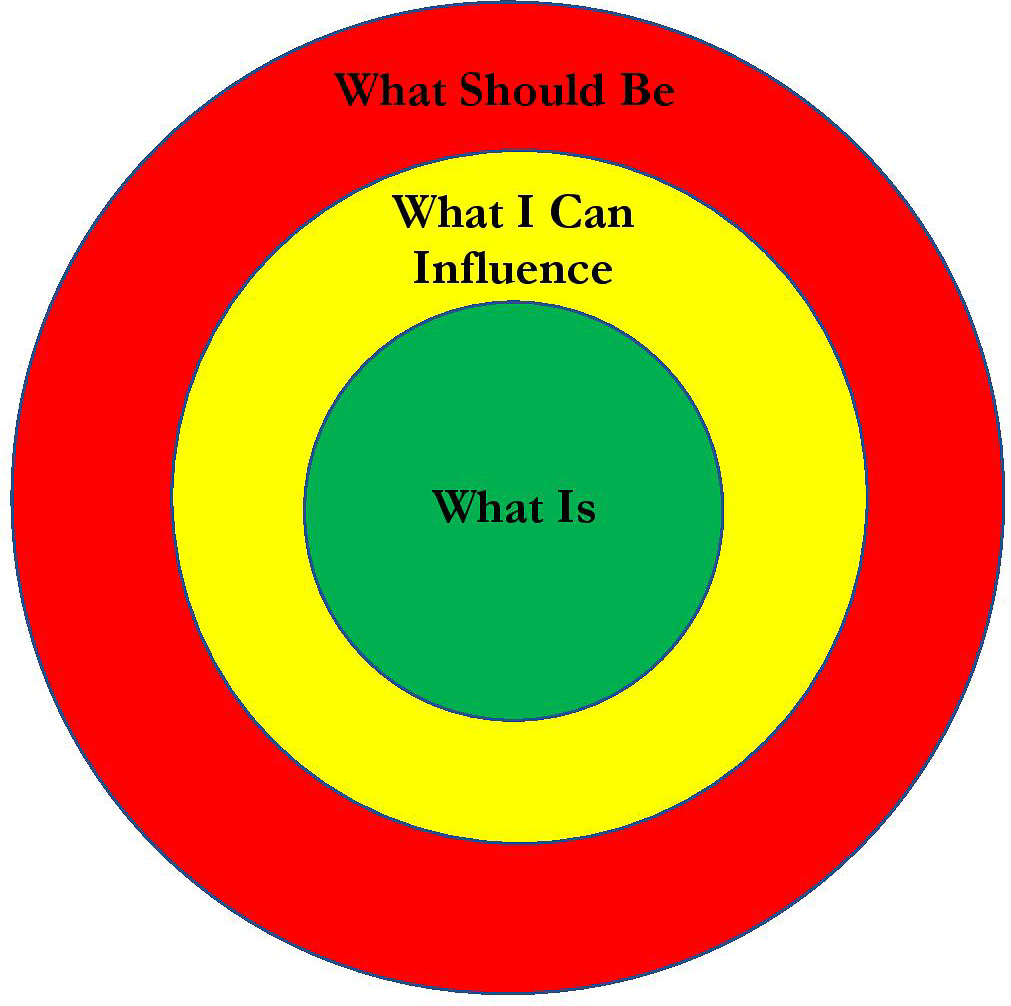A few years ago I met with Chris (not his real name), a Foreign Service officer who was having trouble bouncing back after not being selected for an assignment he really wanted. As he described what was happening, he kept using the word “should.”
His current boss "should" have advocated more forcefully for his candidacy. The Ambassador "should" have fought for him because he was the most qualified candidate.
An office in Washington "should" not have promoted their candidate, given he had less experience than Chris. Chris believed he had been jerked around and that several people "should" help him get a good assignment to compensate.
Chris was mentally trapped in what "should be," and it was eroding his resilience. Instead, he needed to shift his focus to "what is."
For example, Chris's boss had a poor relationship with key individuals who influenced the assignment Chris wanted. Therefore, it was unlikely Chris's boss was going to reach out and advocate on Chris's behalf. If Chris had recognized this reality, he may have found other mentors who could have supported him. Or, he may have reached out directly to the decision-makers to lobby for the job.
Chris also had an idealized view of the Foreign Service assignment process, believing it should be fair and transparent when, instead, it is opaque and based on personal connections and reputations. Since many highly qualified people apply for the same positions, leaders tend to pick the people they know and trust with whom to work. While this culture is less than ideal, if Chris had accepted what is, he could have made himself more competitive by cultivating more relationships and lobbying for positions rather than relying only on his qualifications.
When Chris found himself without an assignment, his insistence that he was owed something because he was jerked around meant he wasn't getting anything. The reality is that no one perceived that they owed Chris something and so they did nothing to help him. By relying on others to "do what is right," Chris trapped himself in a corner that gave him few options.
Accepting "what is" does not mean acquiescing to unfairness or injustice. Instead, after you decide what you think should be, make an effort to understand what is and why it is that way. You may adjust your image of what should be by better understanding other people's motivations and situations. Then, make a conscious decision about how to move forward.
It is ok to accept what is and adapt your behavior accordingly. For example, the checkout lines at my local grocery store are slow. Instead of seething about the slow lines every time I shop, I remind myself that the lines are slow because the women working the registers are friendly and chatty and take their time. I realize that this is a reality I’m not willing or probably even able to change. So, I avoid shopping when I’m in a hurry.
If you feel strongly about what should be, make a deliberate decision whether you will try to influence reality. Many people promoting social justice are doing just that, and they have a positive impact on society. To be successful at changing something, you first need to understand what it is. Then, if you decide you want to influence what is, build a coalition of like-minded people, clearly define your goals, and develop a strategy for making the change given on-the-ground realities. These actions will help you stay resilient, even when improvements are hard to achieve.
For example, when I returned from Iraq in 2004, I thought the State Department did a poor job of supporting me and others serving in dangerous postings. I thought they should do better. I also accepted the bureaucratic realities and the limitations of the State Department's culture. For 15 years, I worked with allies to change what is, and while it still isn't perfect and isn't yet what I think should be, it is much better than it was and is continuing to improve. If I had gotten stuck in 2004 over what should be, I would not have recovered my productivity and resilience as quickly as I did and I would not have been able to make the positive changes I believed were needed.
So, if you are stuck in what “should be,” get a realistic picture of “what is” and then make a conscious decision about whether you’ll accept what is and adapt your behavior accordingly, or join up with others to make a change.
What is your experience accepting or influencing “what is?”
___________________________
To learn more about how you and your team can thrive in adversity, visit my website, and follow me on LinkedIn, Facebook, and Twitter. And, check out my online Resilience Leadership course.

